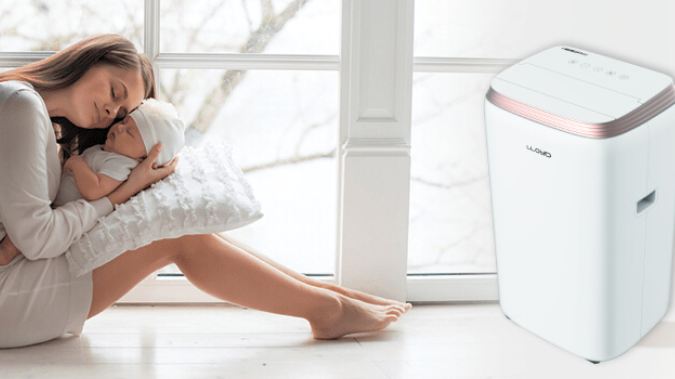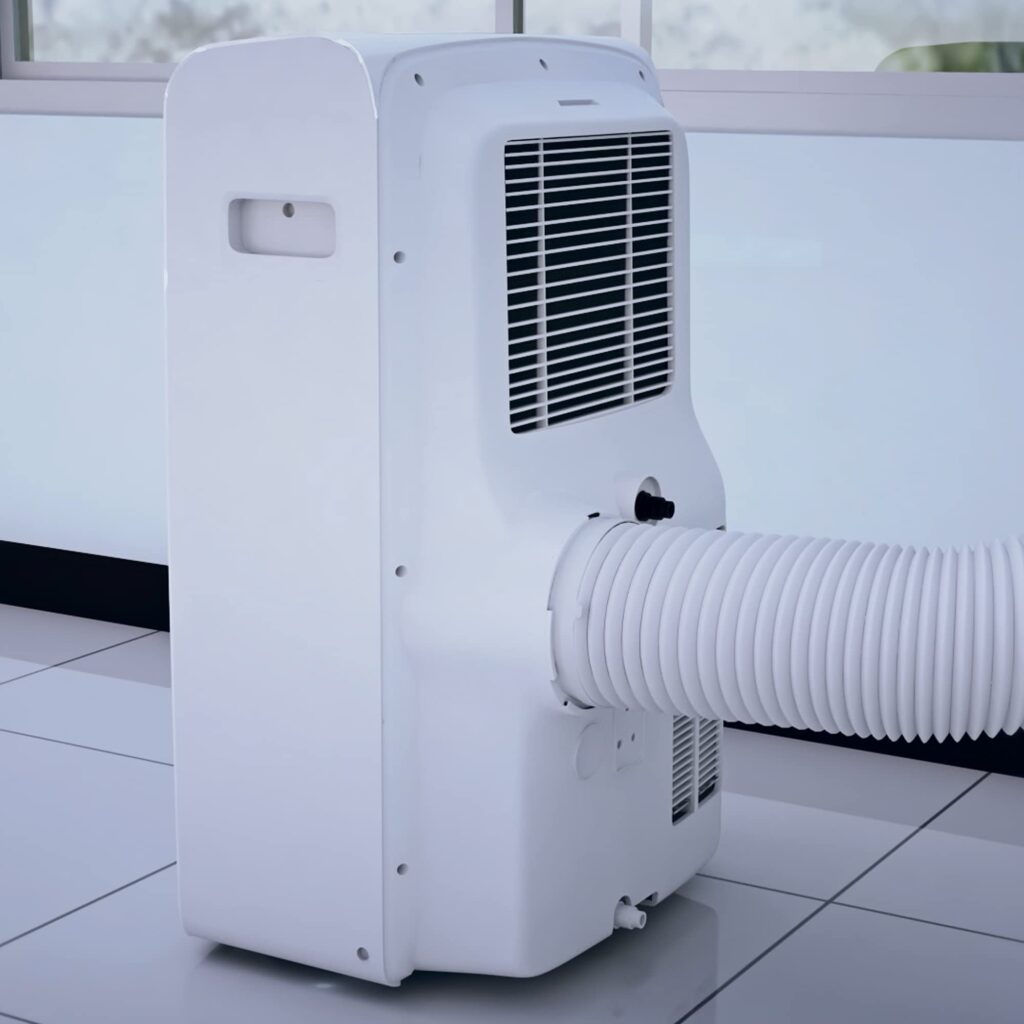The Guide to Portable Air Conditioners: Stay Cool Anywhere
1.Introduction:
In the scorching heat of summer, staying cool is a top priority. While traditional central air conditioning systems are effective, they are not always feasible for everyone, this is where portable ACs come to the rescue. Offering convenience, flexibility and efficient cooling, portable AC units have become a popular choice for those who want to beat the heat without the hassle of installation or high energy bills. In this comprehensive guide, we’ll walk you through everything you need to know about portable air conditioners, from how they work to their benefits and how to choose the right air conditioner for your needs.
Understanding Portable Air Conditioners:
Portable air conditioners, often abbreviated as PACs, are standalone units designed to cool small to medium-sized spaces. Unlike traditional AC systems, which are fixed to one location, portable AC units can be moved, allowing you to cool different rooms as needed. These typically consist of a compressor, condenser, evaporator, and fan, all housed in a single compact unit. These components work together to extract heat from the air inside a room, and expel it outside while circulating cool air inside the home.

How do portable air conditioners work?
Portable air conditioners operate on the same basic principles as their larger counterparts. They use the refrigeration cycle to remove heat from the air and cool it before redistributing it into the room. Here’s a simplified description of how they work:
- Air Intake: Warm air from the room is drawn into the unit through a vent.
- Cooling Process: Hot air passes over coils containing refrigerant, which absorb heat from the air, cooling it.
- Exhaust: The heat absorbed by the refrigerant is vented out through the exhaust pipe.
- Cold Air Circulation: The cool air is then circulated back into the room, reducing the overall temperature.
Key Features and Benefits:
Portable air conditioners offer several benefits compared to traditional cooling systems:
- Portability: As the name suggests, the primary advantage of portable AC units is their portability. You can easily move them from room to room, making them ideal for renters or homeowners who don’t want to invest in a permanent installation.
- Easy Installation: Unlike window-mounted or ducted AC systems, portable air conditioners require minimal installation. Most models come with a window kit for venting, which can be installed in just a few minutes without the need for extensive tools or professional help.
- Flexibility: Portable AC units are versatile, allowing you to cool specific areas or rooms as needed. This flexibility is especially beneficial in homes with uneven cooling distribution or in locations where central air conditioning is not possible.
- Energy Efficiency: While portable air conditioners may not be as energy-efficient as central AC systems, they are generally more efficient than window units, especially when cooling small to medium-sized spaces. We do. Look for units with high energy efficiency ratio (EER) and programmable settings to maximize energy savings.
- Dehumidification: Apart from cooling, many portable AC units also have built-in dehumidifiers, which help remove excess moisture from the air. This can improve the overall comfort level and prevent problems like mold and mildew growth.
Choosing the right portable air conditioner:
When selecting a portable ac, there are several factors to consider:
- BTU Capacity: The cooling capacity of a portable AC unit is measured in British Thermal Units (BTU). Depending on the BTU rating it can cool a large area effectively. Determine the square footage of the room you want to cool and choose a unit with the appropriate BTU rating.
- Size and Portability: Consider the size and weight of the unit, especially if you plan to move it frequently. Look for models with built-in handles and casters for easy mobility.
- Ventilation Requirements: Portable ac require proper ventilation to expel hot air. Most units come with an exhaust hose and window kit for exhaust, but you will need to make sure your chosen location has a suitable window or opening for installation.
- Noise Level: Pay attention to the noise level of the unit, especially if you will be using it in bedrooms or other quiet areas. Look for models with quiet operation features and adjustable fan speeds.
- Additional Features: Consider any additional features you may need, such as a programmable timer, remote control, or adjustable air direction. Some models also offer Wi-Fi connectivity for smartphone control and monitoring.

Maintenance and Care:
To ensure best performance and longevity, maintain your portable air conditioner.
2.Introduction:
As temperatures rise, it becomes more important to find ways to stay cool. While traditional air conditioning systems are effective, they are not always feasible for everyone. This is where portable air conditioners come into play. Offering convenience, flexibility and efficient cooling, portable AC units have become a popular choice for those who want to beat the heat without the hassle of installation or high energy bills. In this comprehensive guide, we will explain in detail everything you need to know about portable air conditioners, exploring their different types, advanced features and tips for optimal use.
Types of portable air conditioners:
Portable air conditioners come in a variety of types, each meeting specific cooling needs and preferences:
- Single-hose portable air conditioners: These units feature a single exhaust hose to expel hot air out of the room. Although they are generally more economical and easier to install, single-duct models may not be as efficient as dual-duct units because they draw hot air from the room for the compressor to cool.
- Dual-Hose Portable Air Conditioner: Dual-hose models have two separate hoses – one for intake and one for exhaust – which adds to overall efficiency by eliminating the need to pull hot air from the room. Makes improvements. This design allows for faster cooling and better temperature control, making dual-hose units ideal for larger spaces or areas with high heat loads.
- Evaporative Air Coolers: Also known as swamp coolers, evaporative air coolers use the natural process of evaporation to cool the air. These units work best in dry climates where humidity levels are low. Although they are more energy-efficient than traditional air conditioners, evaporative coolers are not true air conditioners and may not be as effective in humid environments.
Advanced features to consider:
Modern portable air conditioners are equipped with a variety of advanced features to increase comfort and convenience:
- Programmable Thermostats: Programmable thermostats allow you to set specific temperature levels and operating schedules, ensuring optimal cooling efficiency while reducing energy consumption.
- Remote Control: Many portable AC units come with a remote control for easy operation from across the room. Some models also offer smartphone compatibility, allowing you to control the unit remotely via a mobile app.
- Auto-evaporation Technology: Auto-evaporation technology eliminates the need for manual drainage by evaporating the condensed water internally or expelling it through the exhaust hose with hot air.
- Adjustable Fan Speed: Adjustable fan speed enables you to customize airflow and noise levels based on your preferences and room size.
- Sleep Mode: Sleep Mode automatically adjusts the temperature and fan speed for quiet operation at night, ensuring a comfortable sleep environment without unnecessary noise disruption.

Tips for optimal use:
To maximize the performance and longevity of your portable air conditioner, consider the following tips:
- Proper ventilation: Ensure proper ventilation by placing the exhaust duct near a window or opening to expel hot air. Avoid blocking or obstructing the airflow path to maintain efficient cooling.
- Sealing Air Leaks: Seal any gaps or leaks around windows, doors or vents to prevent hot air from entering the room and compromising cooling efficiency.
- Routine Maintenance: Perform routine maintenance tasks such as cleaning or replacing the air filter, inspecting the exhaust hose for blockages and checking for leaks or water accumulation.
- Optimum Placement: Place the portable AC unit in a central location within the room for uniform cooling distribution. Keep the unit away from heat sources, direct sunlight, or crowded areas to prevent overheating and obstruction of air flow.
conclusion:
Portable ac provide a convenient and efficient cooling solution for homes, offices, and other locations where traditional AC systems may not be practical. With their variety of types, advanced features and tips for optimal usage, portable AC units provide relief from the heat without the hassle of permanent installation or high energy costs. By understanding the different types of portable air conditioners, considering advanced features, and following proper maintenance guidelines, you can stay cool and comfortable no matter where you are.

